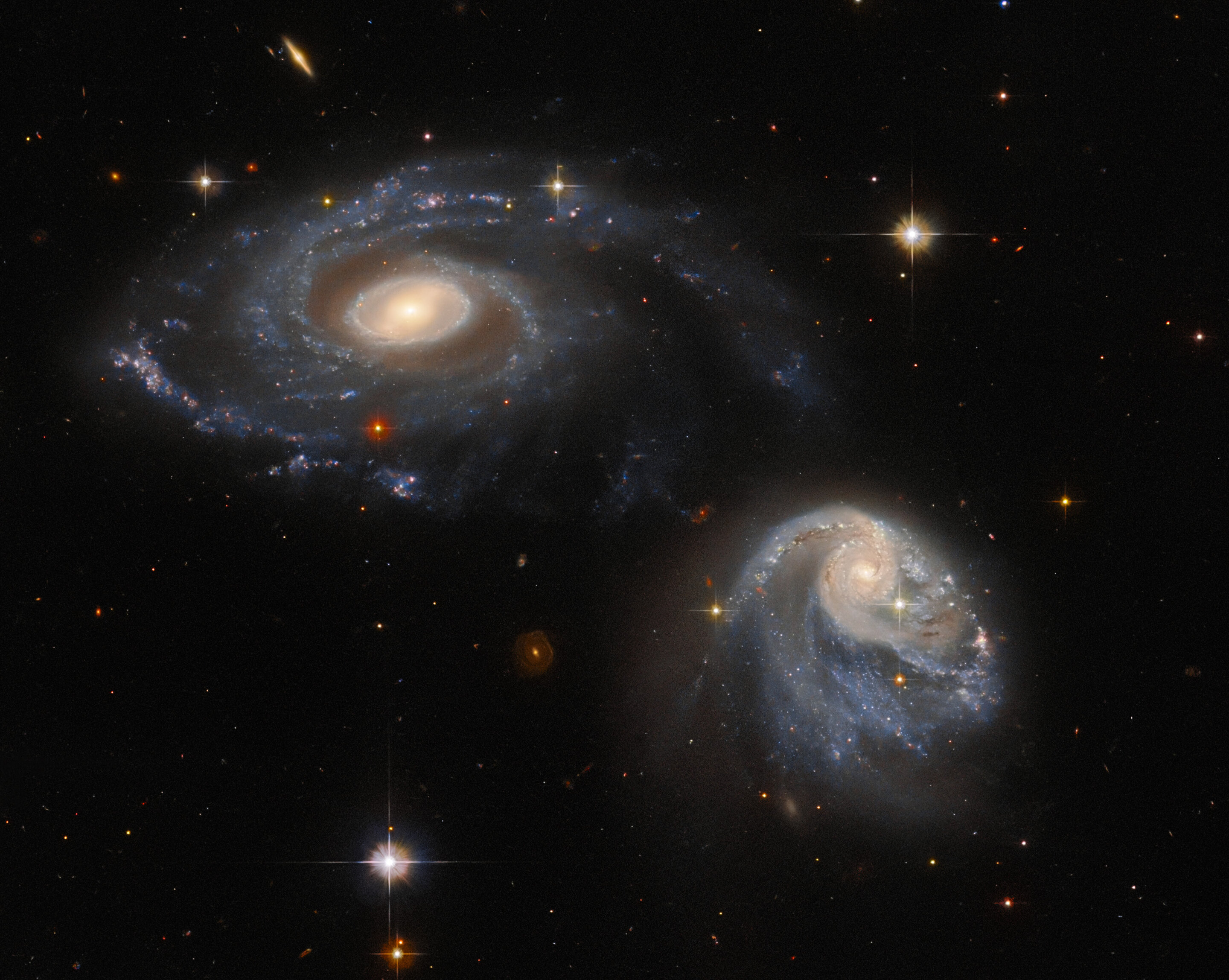 |
| Credit: ESA/Hubble & NASA, Dark Energy Survey/Department of Energy/Fermilab/Dark Energy Camera (DECam)/Cerro Tololo Inter-American Observatory/NOIRLab/AURA |
In this view from the NASA/ESA Hubble Space Telescope, the two interacting galaxies known as Arp-Madore 608-333 appear to float side by side. Though they look calm and unaffected, the two galaxies are quietly bending one another through a mutual gravitational interaction that disrupts and distorts both. This drawn-out galaxy collision was photographed by Hubble's Advanced Camera for Surveys. The interacting galaxies in Arp-Madore 608-333 are part of an initiative to collect promising objects for future research with Hubble, ground-based observatories, and the NASA/ESA/CSA James Webb Space Telescope. Astronomers analyzed existing astronomy catalogs for a list of objects scattered across the night sky to create this library.
They sought to include objects that had previously been recognized as intriguing and that Hubble could view regardless of the direction it was pointed. The process of allocating Hubble observing time is lengthy, competitive, and demanding, and the observations are assigned to use every single second of Hubble time available. However, a small but consistent percentage of the time, roughly 2-3%, is lost as Hubble spins to aim at new objects. Snapshot algorithms, such as the one used to catch Arp-Madore 608-333, exist to fill this need and capitalize on the brief intervals between lengthier observations. Snapshot systems not only provide stunning photographs, but they also allow astronomers to collect as much data as possible using Hubble.



0 Comments